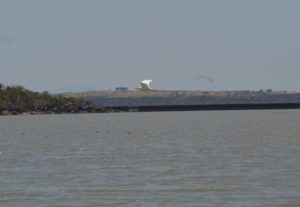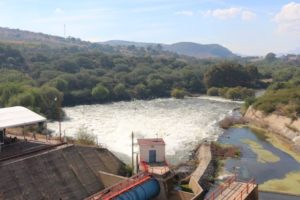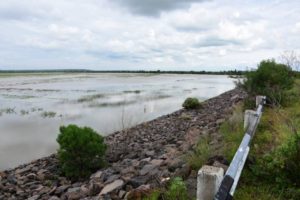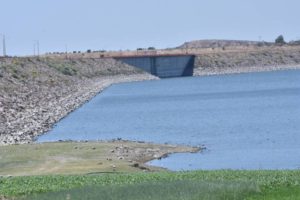Guanajuato dams are recharged due to rainfall
News Category: News, Community News, and General Discussion
-
Published September 14th, 2021
The rains that have fallen on Guanajuato have caused the state’s dams to recover their water storage levels, after the state went through two dry years, which caused several of these reservoirs to be practically dry at the beginning of the year.

According to the Monitoring of Dams of the National Water Information System, the nine dams that the National Water Commission monitors to see their behavior reach a general level of 80% of the storage, but there are dams that have already recovered their volumes, such as Solís, located in Acámbaro, which has 105% of stored water, since it has captured 840,730 million liters of water, out of the 800 billion liters it can store; However, this dam has an area for storing surplus water and therefore any overflow of this reservoir is ruled out.
Another dam that is about to be filled is La Golondrina, located in Pénjamo, which has stored 4,557 million liters of the 4,670 million liters it can store, which means that it is at 95% of its capacity.
The Mariano Abasolo dam, also located in Pénjamo, is at 92% of its capacity since it has managed to store 18,430 million liters of water, of the 20,79 billion liters that this reservoir can capture.
La Purísima and La Soledad dams, both located in the municipality of Guanajuato, are at 82% of their capacity; the former has 89,655 million liters of water stored, out of the 110 billion liters it can store; the latter has 1,524 million liters, out of the 1,857 million liters it can capture.
The El Palote dam, located in Leon, is at 72% of its capacity, with 6,979 million liters stored, of the 9,643 million liters it can capture.

The Ignacio Allende dam, located in San Miguel de Allende and which at the beginning of the year was one of the dams that ran out of water, is now at 66% of its capacity, with 93.867 billion liters stored, of the 141.779 billion liters it can capture in its entirety.
The Yuriria Lagoon, another reservoir that was at dry levels at the beginning of the year, is currently at 61% of its capacity, with 170,710 million liters accumulated, of the 278,790 million it can store; water for this lagoon is vital, since thousands of Yuriria families live from the fishing and tourism business, which in the two previous years had economic problems due to the lack of water; at the beginning of the year, the Yuriria Lagoon had only 13% of water stored.
Finally, the Peñuelitas dam, located in Dolores Hidalgo, is at 38% of its capacity, with 6,639 million liters of water accumulated, of the 17,460 million liters that this dam can store in total; at the beginning of the year, this dam had only 4% of water stored.
Water tables have not yet recovered
Although it has been a season with abundant rainfall, there is still a long way to go to recover the water table after two years of drought.

Agustin Robles Montenegro, president of the Irrigation District 011, said that although the rain has helped the field, as good weather is expected, the water has not yet been enough for the groundwater to recharge, because it was two years of drought that led them to be in a critical situation.
“Although it started to rain in May, by June there were still dry areas and the rains have allowed the recovery of the levels of dams, but more water is needed to go underground,” he said.
For Agustín Robles Montenegro, it has to rain as intensely as now in the next five years “to begin to have these water recharges, but as the climatic situation can no longer be predicted, we have to put more effort into technification, to use more surface water from the dams for irrigation and give the opportunity to the wells to recharge, extracting less water”.
The scientist Hugo García Castañeda, a former member of the Group of Specialists for the attention of emergencies due to severe hydrometeorological events of the National Water Commission, has to implement an urgent policy to technify the largest amount of agricultural surface since 80% of the water that is wasted is in the field and where only 10% of the food production surface has been technified.

In addition, he proposed the regularization of the wells in the state, since there are more than five thousand wells, of which about 500 are well technified, which generates significant water savings; but in this issue, there is still much to be done, not only by the three levels of government but also by the producers to technify the field.
-


Leave a Reply